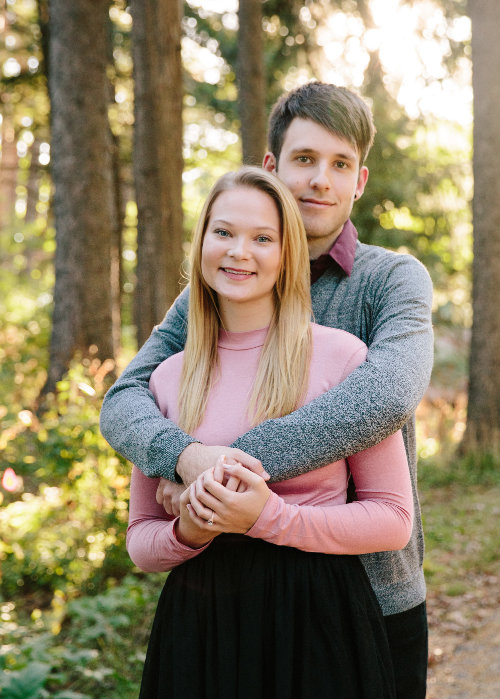Biomedical Engineering Internship Leads to Innovation in Stroke Recovery
ACR Homes was a good job fit for me as I pursued an undergraduate degree in biomedical engineering at the University of Minnesota. Working at ACR I gave me first-hand exposure to the wide range of medical equipment that is used in a home setting for people who live with a variety of disabilities, and an opportunity to develop a biomedical engineering internship aimed at solving a real world problem.
Finding My Research Question

Myrriah Laine – biomedical engineer, ACR employee, with her fiancée.
ACR Homes has over 60 residential houses, and as a float staff at ACR I was able to observe health issues that occur in a variety of homes. A large majority of residents that I worked with were prescribed range of motion exercises aimed at keeping muscles from getting too tight, maintaining flexible joints, and, in some cases, trying to regain function. I observed that it’s hard for a variety of staff to consistently do the exercises to the capacity that would derive the maximum benefit from them. Multiple residents have suffered from some form of traumatic brain injury, or an aneurysm, or a stroke – all of which can lead to cell death within the brain and therefore loss of motor function. In order to regain at least partial function of affected hands, exercises need to be completed frequently to make new neuronal motor pathways.
One particular resident caught my attention and led me to focus on one aspect of range of motion exercises. This person had suffered from a stroke and now has limited use of the left hand. As a result, my research question became: How can the quality and frequency of range of motion exercises be increased?
Finding the Solution
The solution needed to have minimal impact on the direct care staff and their busy schedules, while having a large impact on the resident being served. As a biomedical engineer, my goal was to create a device that the staff could simply apply to the resident’s hand so that the range of motion exercises would be done. I began to design my own hand exoskeleton using SolidWorks and referencing existing devices.

Design of exoskeleton to improve ROM exercises for fingers.
This resulted in my proposed model which will be motor driven and will be able to bend each knuckle in the motion of forming and unclenching a fist. Designing the device has entailed numerous drawings, 2D cardboard models, and hours of self-teaching SolidWorks. When I complete the 3D model, I hope to 3D print a prototype.
What I Gained from this Biomedical Engineering Internship
The residents at ACR Homes have taught me how valuable one’s quality of life is. Working for ACR Homes has given me a new and very important perspective into the medical field that I believe gets overlooked. I learned to look beneath the surface on issues that are already being addressed to try to see if there is a better way for the problem to be overcome. This internship has allowed me to tap into my own innovation by finding a topic independently and being my own project manager.
I’ll be able to use this biomedical engineering internship experience for reference in future job interviews and say that I found a real world issue and worked to find a solution. When I present my work to future employers I can proudly say that the project was my own. As a bonus, by completing the internship and attending Internship Seminars with Jim Nelson, ACR’s CEO, I will be able to receive a letter of recommendation from him to give to prospective employers.
~Myrriah Laine, U of M Student, Direct Care Professional and Intern at ACR Homes
